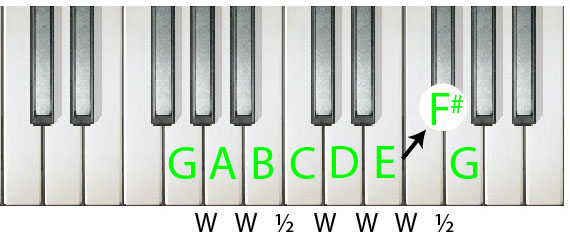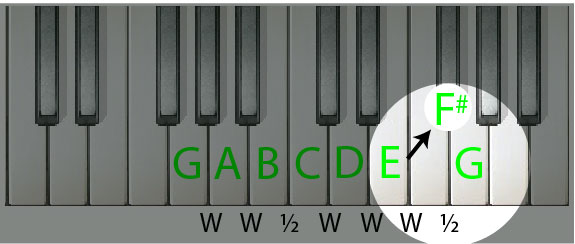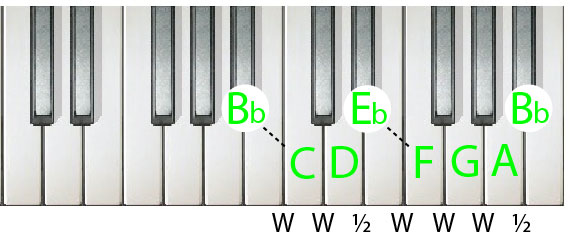Scales Part 2
This tutorial will explain more advanced concepts about Scales.
In the previous tutorial, we learned that a Major Scale is made of a pattern of Whole Steps and Half Steps in the order Whole, Whole, Half, Whole, Whole, Whole Half.
We also saw how the C Major Scale us built on this pattern.
What gives a Major Scale its particular sound is not the notes it contains, but the way those notes are spaced out from each other.
If we were to start on a different note, such as G, but keep the same pattern of Whole Steps and Half steps, we would have a G Major Scale.

However, naturally the interval from E to F is only a half step.
Therefore we replace F with F#, forcing the interval to become a Whole Step.

Again, if we keep the pattern Whole, Whole, Half, Whole, Whole, Whole, Half, we will end up with a Bb major scale.

Fill out the worksheet below to practice your skills.
Scales Part 2
Scales Part 2
This tutorial will explain more advanced concepts about Scales.
In the previous tutorial, we learned that a Major Scale is made of a pattern of Whole Steps and Half Steps in the order Whole, Whole, Half, Whole, Whole, Whole Half.
We also saw how the C Major Scale us built on this pattern.
What gives a Major Scale its particular sound is not the notes it contains, but the way those notes are spaced out from each other.

If we were to start on a different note, such as G, but keep the same pattern of Whole Steps and Half steps, we would have a G Major Scale.

Look at the interval from E to F#. We know that in order to keep the pattern of Whole, Whole, Half, Whole, Whole, Whole, Half we require a whole step here.

However, naturally the interval from E to F is only a half step.
Therefore we replace F with F#, forcing the interval to become a Whole Step.

Suppose we start on a different note, such as Bb.

Again, if we keep the pattern Whole, Whole, Half, Whole, Whole, Whole, Half, we will end up with a Bb major scale.

Using what you know, it is now possible to play all twelve major scales, starting on each of the twelve possible notes.
Fill out the worksheet below to practice your skills.